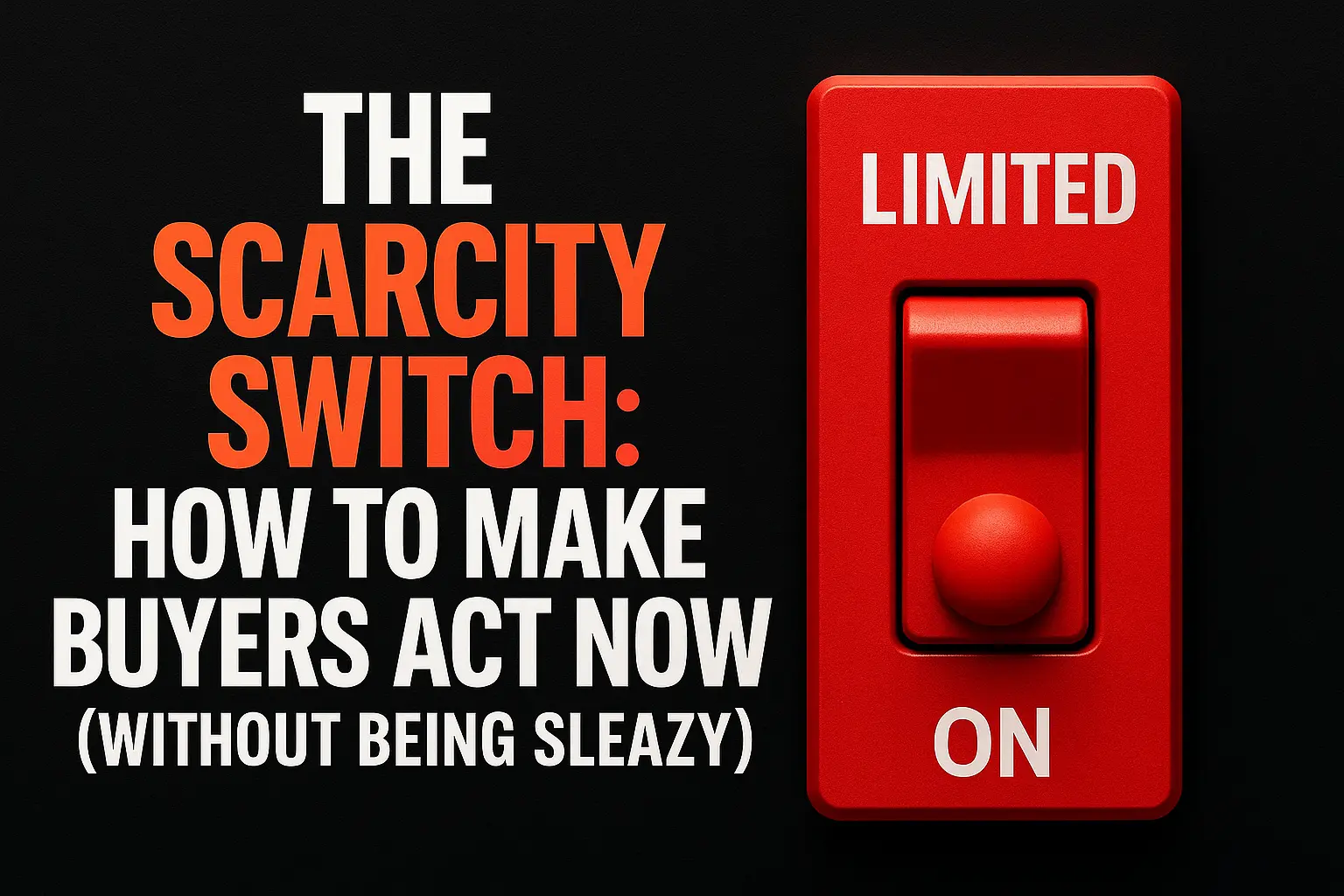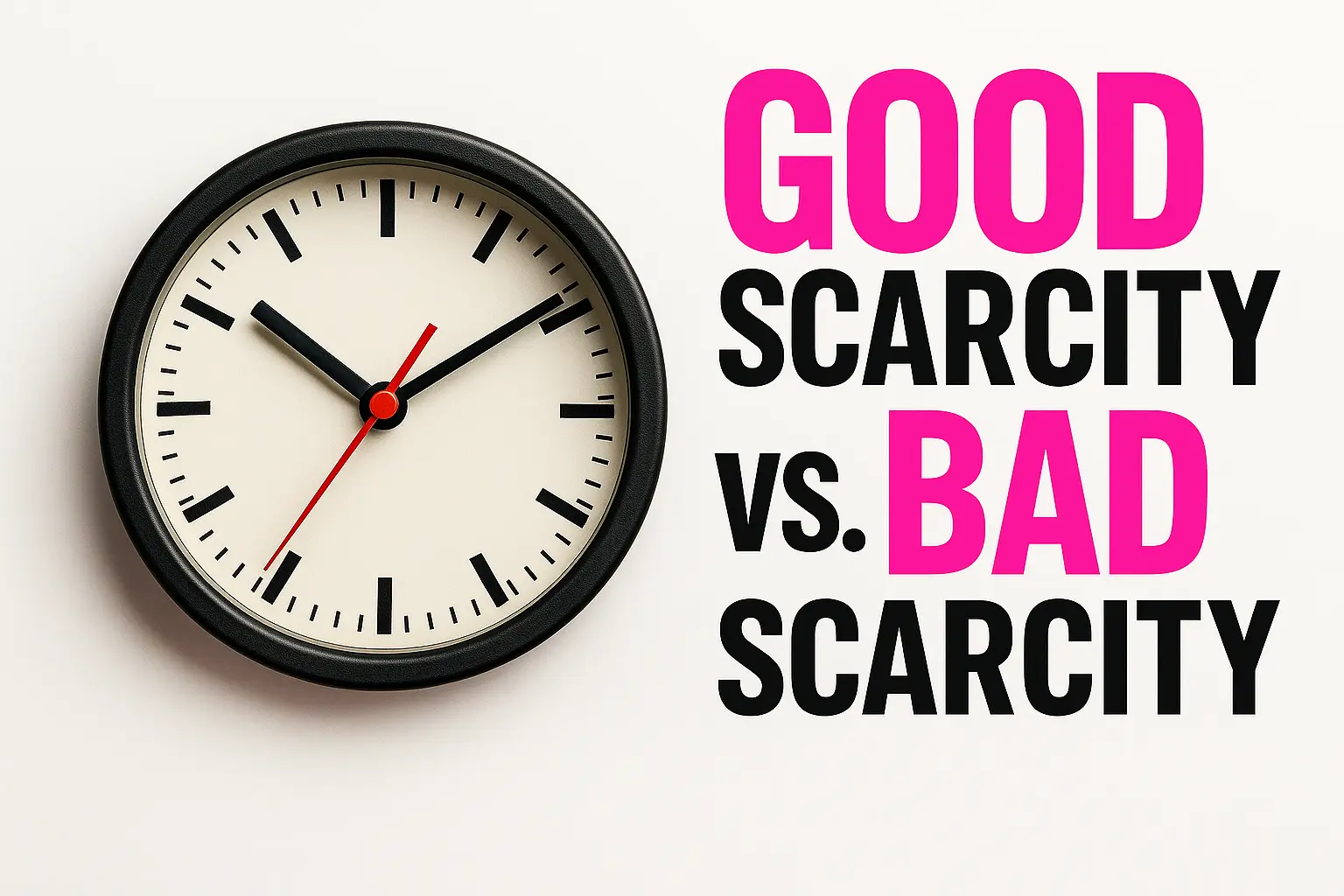

There’s a special place in marketing purgatory for offers that sit in someone’s cart… for three weeks… before disappearing into the abyss of “I’ll think about it.”
It’s not that the offer was bad. It’s not that the customer wasn’t interested.
It’s that you didn’t trigger the Scarcity Switch — the mental nudge that tells the brain, “If I don’t act now, I’ll lose out.”
Here’s the thing: Scarcity isn’t a hack. It’s a psychological truth. When something feels limited, we give it more value. But done wrong, it can wreck your credibility faster than you can say “flash sale.”
Let’s dig into the science, the strategy, and the system for using scarcity to get people to act now — without crossing the line into manipulative.
Scarcity works because it hijacks two mental processes:
Think about it:
Scarcity shifts the decision-making process from “Do I want this?” to “I can’t let this slip.”

Good scarcity builds trust. It’s rooted in reality:
Bad scarcity erodes trust — permanently:
DMA Rule: Scarcity works because it’s true. If it’s not, you’re running a gimmick, not a strategy.
Scarcity works best at the point of decision — when someone is already considering your offer. Too early, and it feels pushy. Too late, and you miss the window.
Where to place it:
Pro tip: Scarcity is most powerful when paired with social proof. “Only 3 spots left — 2 already claimed today” hits both the FOMO and everyone else is doing it buttons.
Scarcity doesn’t mean screaming urgency at every visitor. It’s about being clear about limits while respecting the buyer’s intelligence.
How to do it tastefully:
Real-world DMA case: We ran a true seasonal scarcity campaign for a client’s online course. Enrollment was open for 7 days, once a quarter. The result? A 317% increase in sign-ups compared to their “always open” model.

Yes, scarcity works for digital too — but you can’t fake stock limits. Instead:
If you’re not tracking the impact of scarcity, you’re guessing.
Measure:
Scarcity should lift results immediately — if it doesn’t, you’re either using it wrong or your core offer needs work.
The DMA Scarcity Switch Formula:
Scarcity isn’t about pressure — it’s about priority.
When you use it honestly, it stops buyers from wandering off into indecision and gets them to act while they’re excited.